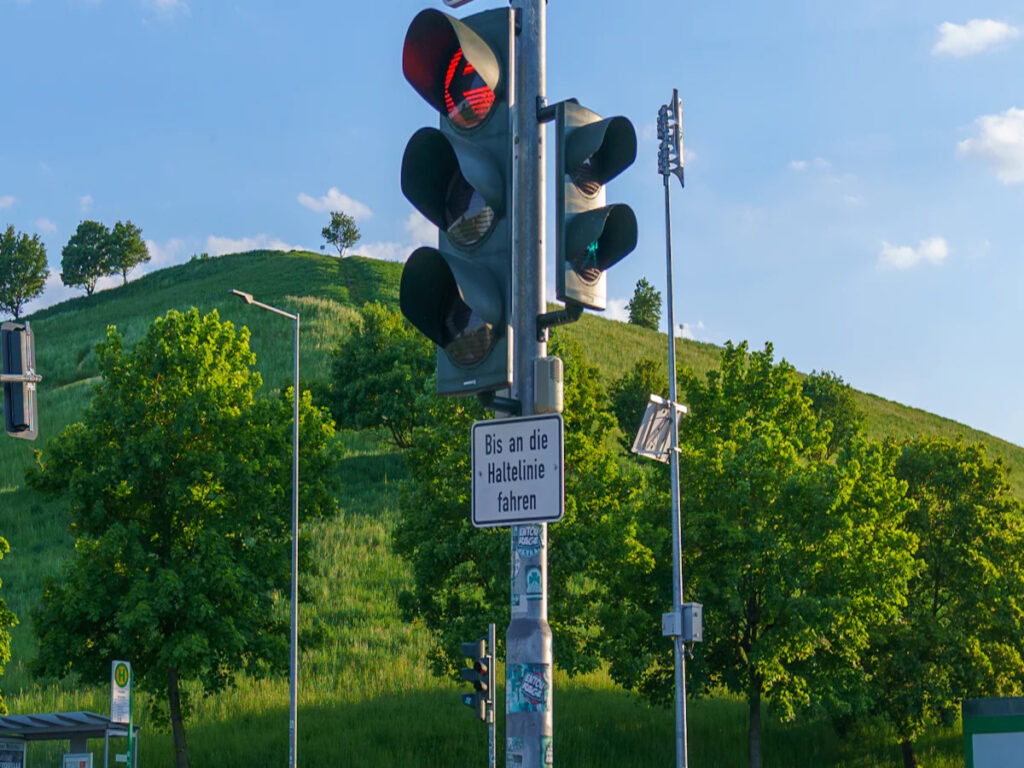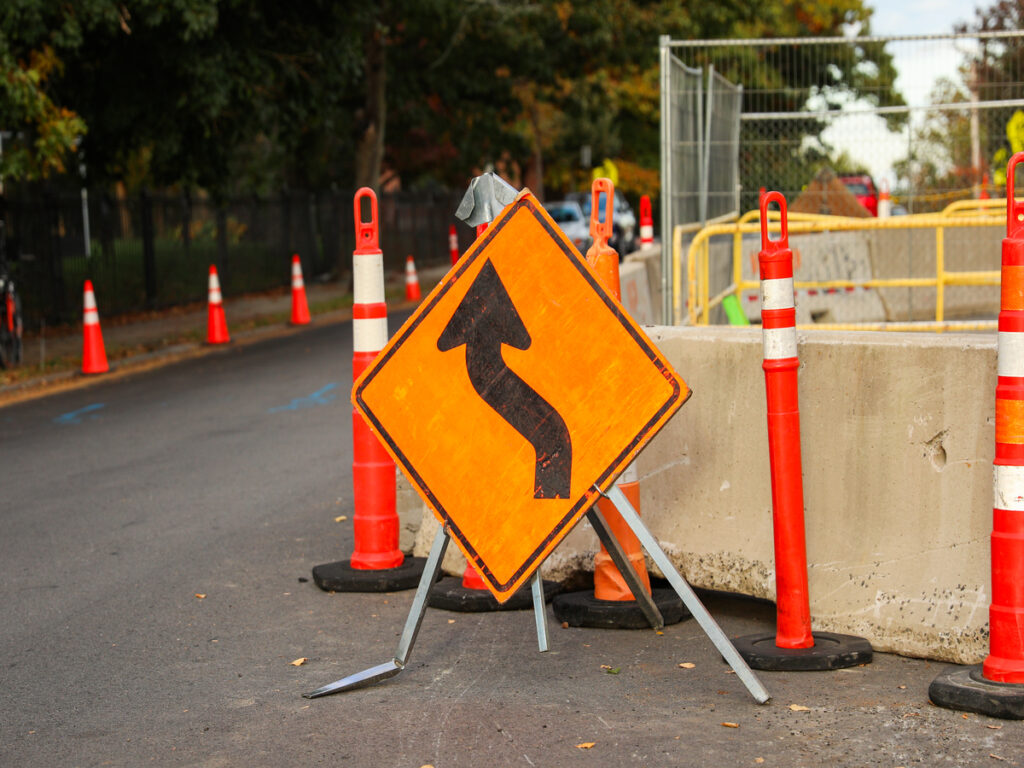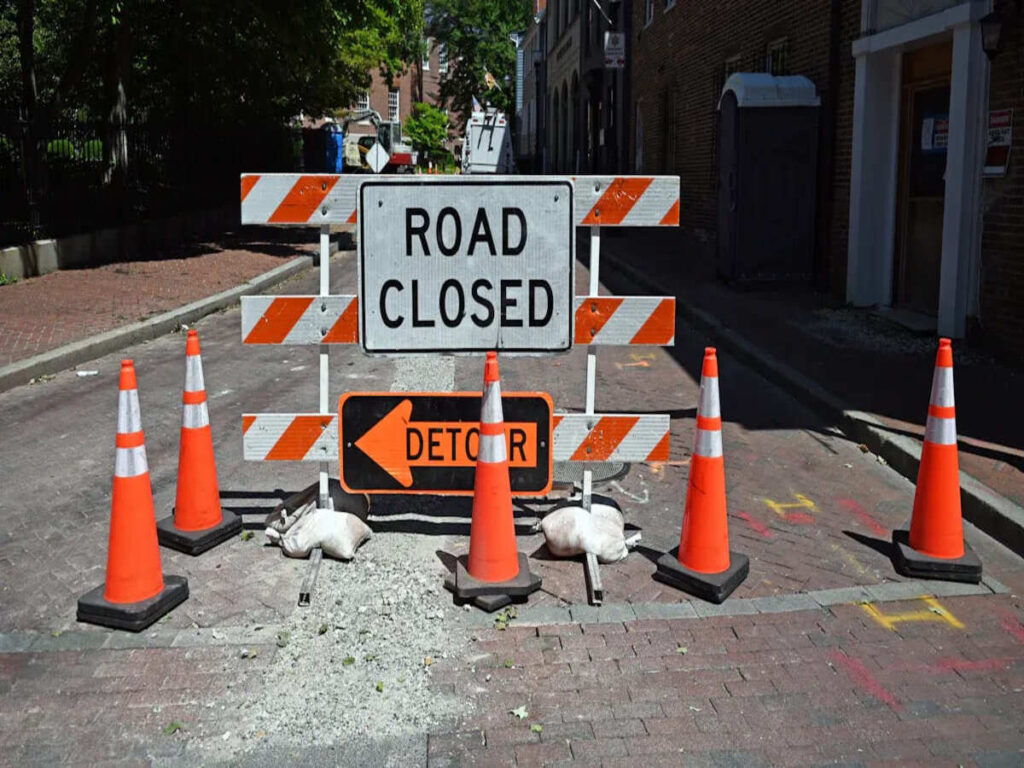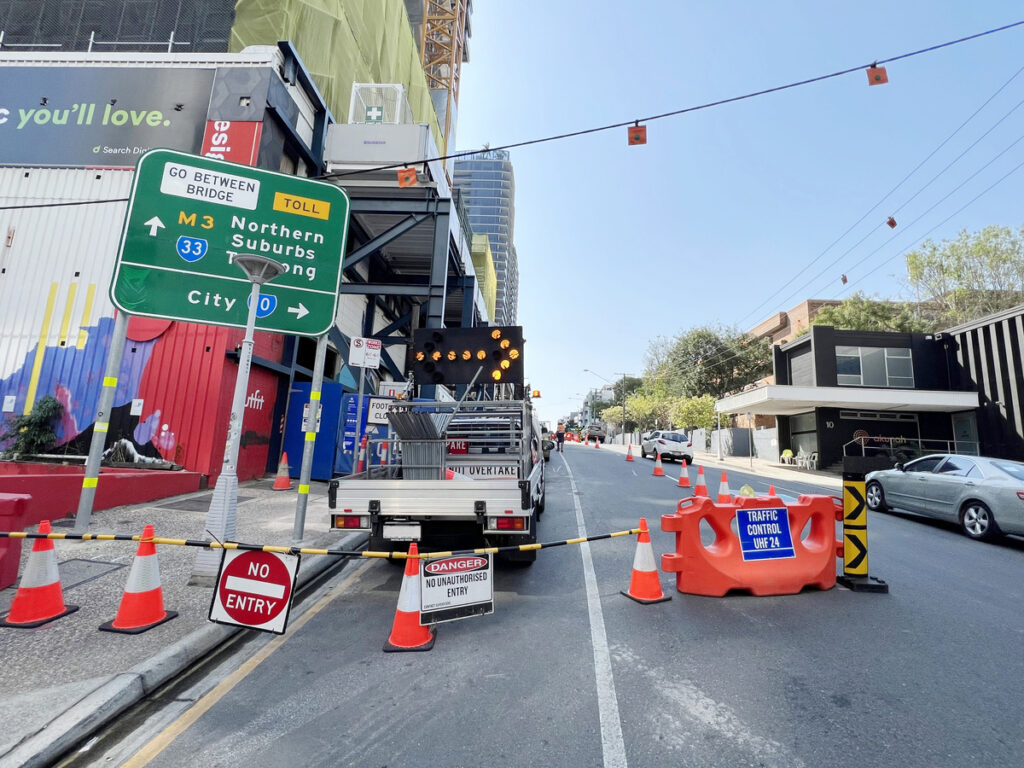
Os dispositivos de controle de tráfego desempenham um papel vital em manter as estradas seguras e eficientes em 2025. Essas ferramentas guiam os drivers, reduzir acidentes, e melhorar o fluxo de tráfego. Avanços recentes em tecnologia revolucionaram o gerenciamento de tráfego. Por exemplo:
- Os semáforos inteligentes agora usam inteligência artificial para se adaptar às condições em tempo real.
- A tecnologia automática de reconhecimento de distância ajuda os veículos a manter distâncias seguras.
- Sistemas inteligentes de gerenciamento de tráfego analisam padrões de tráfego para reduzir o congestionamento.
O impacto dessas inovações é claro.
| Métrica de melhoria | Porcentagem/valor |
|---|---|
| Melhoria geral no tempo médio de viagem | 7.9% |
| Redução em atrasos nas viagens nos dias úteis e feriados | 12.6% |
| Economia de combustível por ano | 318,269 litros |
| Redução em emissões de CO por ano | 101.1 Toneladas métricas |
| Redução nas emissões de CO2 por ano | 720.2 Toneladas métricas |
Esses avanços garantem que os dispositivos de trânsito não apenas aumentem a segurança, mas também contribuam para a sustentabilidade ambiental.
Sinais de controle de tráfego

Definição e propósito
Quais são os sinais de controle de tráfego?
Sinais de controle de tráfego são ferramentas essenciais que comunicam informações importantes aos usuários da estrada. Esses sinais usam símbolos, cores, e texto para transmitir mensagens sobre limites de velocidade, instruções, e riscos potenciais. Eles são uma linguagem universal para os motoristas, garantir que todos entendam as regras da estrada.
Seu papel na orientação e informação dos usuários da estrada
Você confia nos sinais de controle de tráfego para navegar com segurança e eficiência. Eles o guiam através de cruzamentos, Avisar você sobre zonas de construção, e informar sobre mudanças nas condições da estrada. Fornecendo instruções claras, Esses sinais ajudam a reduzir a confusão e prevenir acidentes.
Escolher Sinais OPT para alta qualidade, durável Sinais de trânsito que garantem a máxima visibilidade e conformidade com os padrões de segurança rodoviária.
Principais recursos em 2025
Sinais digitais e dinâmicos para atualizações em tempo real
Em 2025, Os sinais de controle de tráfego evoluíram para incluir recursos digitais e dinâmicos. Os sinais de LED agora fornecem atualizações em tempo real, alertando você para acidentes, fechamento de estradas, ou condições perigosas. Sinais de mensagem variáveis (Vm) adaptar -se às condições de tráfego, exibindo mensagens personalizadas como limites de velocidade reduzidos durante o mau tempo. Essas inovações garantem que você se mantenha informado e tome decisões mais seguras na estrada.
| Tipo de inovação | Descrição |
|---|---|
| Atualizações em tempo real | Sinais de LED avisam sobre o fechamento, acidentes, e informações críticas instantaneamente. |
| Sinais de tráfego dinâmico | Limites de velocidade e fechamentos de faixa ajustam-se remotamente para atender às necessidades em tempo real. |
| Gerenciamento de congestionamento | Os sinais sugerem rotas alternativas para reduzir o impasse durante o horário de pico. |
| Recursos de segurança aprimorados | Alertas para travessias e riscos para pedestres melhoram a segurança geral. |
| Sustentabilidade | Os sinais de LED com eficiência energética suportam gerenciamento de tráfego ecológico. |
Integração com sistemas de veículos inteligentes
Os sinais modernos de controle de tráfego agora se integram perfeitamente aos sistemas de veículos inteligentes. Seu carro pode receber atualizações diretamente desses sinais, Ajudando você a antecipar mudanças no fluxo de tráfego ou condições da estrada. Esta integração suporta veículos conectados e aprimora sua experiência de direção.
Cenários de benefícios e uso
Melhorando a conscientização e a tomada de decisões do motorista
Os sinais de controle de tráfego desempenham um papel crucial na melhoria da sua consciência na estrada. Por exemplo:
- Os sinais de rendimento ajudam você a desacelerar e dar prioridade a outros veículos, Prevenção de acidentes nas cruzamentos.
- Sinais de zona escolar Lembre você de reduzir a velocidade perto das escolas, Protegendo as crianças de danos.
Esses sinais garantem que você tome decisões informadas, mantendo todos em segurança.
Apoiando veículos autônomos e conectados
Veículos autônomos confia fortemente nos sinais de controle de tráfego para navegação. Os sinais de alta tecnologia fornecem os dados que esses veículos precisam para ajustar a velocidade, mudar faixas, ou pare com segurança. Esta tecnologia também beneficia veículos conectados, criando um fluxo de tráfego mais suave e seguro.
Sinais de trânsito

Definição e propósito
O que são sinais de trânsito?
Sinais de trânsito são ferramentas essenciais que regulam o movimento dos veículos, pedestres, e ciclistas em cruzamentos. Esses dispositivos usam um sistema de vermelho, amarelo, e luzes verdes para indicar quando você deve parar, prepare -se para se mover, ou prosseguir. Eles garantem ordem e impedem o caos em estradas movimentadas.
Como eles regulam o fluxo de tráfego e garantem a segurança
Os sinais de trânsito desempenham um papel crítico na manutenção de segurança e eficiência. Eles gerenciam o fluxo de veículos atribuindo a direita de passagem, reduzindo o risco de colisões. Para pedestres e ciclistas, Os sinais criam oportunidades seguras para atravessar ruas ou navegar cruzamentos. Controlando o fluxo de tráfego, Esses dispositivos ajudam a prevenir acidentes e melhorar a segurança rodoviária geral.
Principais recursos em 2025
Sinais inteligentes movidos a IA para gerenciamento de tráfego adaptativo
Em 2025, Os sinais de trânsito se tornaram mais inteligentes, obrigado a inteligência artificial. Esses sistemas analisam dados em tempo real de câmeras, sensores, e Dispositivos GPS para prever congestão e ajustar os horários da luz dinamicamente. Por exemplo:
- Em Los Angeles, Os sinais movidos a IA reduzem os tempos de viagem por 12% otimizando mudanças de luz com base na densidade de tráfego.
- Pittsburgh's Sistema SURTRAC corta o tempo ocioso nos cruzamentos por 40%, melhorando significativamente o fluxo de tráfego.
- Cingapura usa a IA para prever congestionamento e otimizar os horários dos sinais, Garantir viagens mais suaves.
Esses avanços tornam o gerenciamento de tráfego mais eficiente e responsivo às condições de mudança.
Sincronização em tempo real com padrões de tráfego
Os sinais de trânsito modernos agora sincronizam com os padrões de tráfego em tempo real. Eles se comunicam com veículos conectados e outros dispositivos de tráfego para criar um fluxo sem costura. Essa sincronização reduz gargalos e garante transições mais suaves em cruzamentos. Adaptando -se às condições de vida, Esses sinais minimizam atrasos e melhoram sua experiência de condução.
Cenários de benefícios e uso
Redução da congestão em áreas urbanas
Os sinais de trânsito movidos a IA se mostraram eficazes na redução do congestionamento urbano. O sistema Surtrac de Pittsburgh demonstra isso cortando os tempos de viagem por 25%. Otimizando os horários da luz e reduzindo o tempo ocioso, Esses sistemas ajudam você a gastar menos tempo preso no trânsito. Isso não apenas economiza tempo, mas também reduz o consumo de combustível e as emissões.
Melhorando a segurança de pedestres e ciclistas
Sinais de trânsito modernos priorizam a segurança de pedestres e ciclistas. Eles usam sistemas de vídeo para detectar movimento e ajustar os horários do sinal de acordo. Recursos como faixas de pedestres e curvas altamente visíveis criam zonas mais seguras para cruzar. As faixas de trânsito divididas nos cruzamentos reduzem ainda mais os pontos de conflito, garantindo um ambiente mais seguro para todos na estrada.
Marcas de estrada
Definição e propósito
O que são marcas de estrada?
As marcações da estrada são indicadores visuais pintados ou incorporados em superfícies da estrada. Eles fornecem orientação essencial para os motoristas, ciclistas, e pedestres. Essas marcações incluem linhas, símbolos, e padrões que comunicam informações críticas sobre faixas, cruzamentos, e zonas de estacionamento. Eles agem como dispositivos de tráfego silencioso, garantir que todos entendam como navegar na estrada com segurança.
Seu papel na organização e orientação do tráfego
As marcações da estrada desempenham um papel vital na manutenção da ordem na estrada. Eles ajudam você a ficar dentro de sua pista, indicar onde parar, e guiá -lo através de cruzamentos. Fazelas e flechas garantem que pedestres e veículos se movam em harmonia. Definindo claramente espaços e direções, As marcas da estrada reduzem a confusão e melhoram o fluxo de tráfego.
Principais recursos em 2025
Materiais de alta visibilidade para melhor visibilidade noturna
Em 2025, As marcações da estrada usam materiais avançados que aumentam a visibilidade, especialmente à noite ou durante clima adverso. Tintas refletivas e materiais termoplásticos facilitam a ver essas marcas em faróis. Esta melhoria garante que você possa navegar com segurança, mesmo em condições de pouca luz. Esses recursos de alta visibilidade também beneficiam os motoristas mais antigos e aqueles com visão reduzida.
Sensores incorporados para sistemas rodoviários inteligentes
As marcas de estrada modernas agora incluem sensores incorporados que se comunicam com sistemas rodoviários inteligentes. Esses sensores coletam dados sobre o fluxo de tráfego, velocidade do veículo, e condições da estrada. Eles transmitem essas informações a veículos conectados e centros de gerenciamento de tráfego. Esta tecnologia ajuda você a se manter informado sobre os perigos e garante mais lotes de deslocamentos.
Cenários de benefícios e uso
Melhorar a disciplina da pista e reduzir os acidentes
As marcações da estrada melhoram a disciplina da pista, definindo claramente os limites. Eles o guiam para ficar dentro de sua pista, reduzindo o risco de colisões. As linhas de parada e as marcas de rendimento garantem que os veículos sigam regras adequadas de passagem. Esses recursos criam um ambiente de direção mais seguro para todos.
Apoiando sistemas avançados de assistência ao motorista (ADAS)
As marcas de estrada são essenciais para a operação de Sistemas avançados de assistência ao motorista (ADAS). Eles fornecem informações críticas para a detecção de pista, que suporta recursos como Assistência de manutenção da pista (Como) e Avanços de partida da pista (LDW). Esses sistemas monitoram as marcações da estrada para alertá -lo se o seu veículo deriva de sua pista. Fazendo isso, Eles aumentam a segurança e reduzem acidentes.
- As marcas de pista ajudam os sistemas Adas a entender o ambiente rodoviário.
- Eles permitem recursos como controle de cruzeiro adaptativo e mudanças de pista autônoma.
- As marcas claras garantem que esses sistemas funcionem com precisão, Melhorando sua experiência de condução.
Dispositivos de controle de tráfego temporários
Definição e propósito
O que são dispositivos temporários de controle de tráfego?
Dispositivos de controle de tráfego temporários são ferramentas projetadas para gerenciar o tráfego durante situações de curto prazo. Estes incluem zonas de construção, Manutenção da estrada, emergências, e eventos públicos. Eles guiam os motoristas, ciclistas, e pedestres com segurança nas áreas afetadas ou ao redor. Esses dispositivos também protegem trabalhadores e equipamentos em zonas de trabalho, garantindo um ambiente seguro para todos os envolvidos.
Seu papel no gerenciamento do tráfego durante situações temporárias
Os dispositivos temporários de controle de tráfego desempenham um papel crítico na manutenção da ordem durante as interrupções. Eles garantem o movimento seguro e eficiente dos usuários da estrada, minimizando a confusão. Por exemplo, Os sinais de controle de tráfego temporários fornecem instruções claras, Ajudando você a navegar em desvios ou fechamentos de pista. Esses dispositivos também protegem os trabalhadores e equipamentos, criando um buffer entre tráfego ativo e zonas de trabalho.
Principais recursos em 2025
Barreiras inteligentes com implantação automatizada
Em 2025, Barreiras inteligentes revolucionaram o controle de tráfego temporário. Esses barreiras implantar automaticamente, reduzindo o tempo de configuração e melhorando a segurança. Eles se ajustam às condições de mudança, como aumento do fluxo de tráfego ou situações de emergência. Usando sensores avançados, Essas barreiras detectam riscos potenciais e respondem em tempo real, garantindo um ambiente mais seguro para trabalhadores e usuários de estrada.
Cones conectados com recursos de rastreamento em tempo real
Conectado Cones de trânsito Agora apresenta tecnologia de ponta, como sensores de radar e módulos GPS. Esses cones de controle de tráfego coletam dados em tempo real sobre velocidades e densidades de tráfego, transmitindo -o para sistemas de gerenciamento de tráfego. Esta informação ajuda as agências a otimizar o planejamento do controle de tráfego e reduzir as interrupções. Adicionalmente, Cones de controle de tráfego conectados enviam alertas imediatos se um veículo os afetar, permitindo uma resposta rápida para minimizar atrasos.
Os cones de controle de tráfego optações são projetados para fornecer segurança e eficiência superiores no gerenciamento do fluxo de tráfego. Esteja você direcionando veículos em zonas de construção ou criando controle de multidões em eventos, Optsigns oferece uma gama abrangente de cones de controle de tráfego de alta visibilidade para manter os motoristas e os pedestres seguros.
Cenários de benefícios e uso
Garantir a segurança nas zonas de construção
Os dispositivos temporários de controle de tráfego são essenciais para manter a segurança nas zonas de construção. Os dispositivos canalizadores orientam o tráfego para longe das áreas de trabalho, Enquanto os sinais de zona de construção alertam os motoristas dos próximos riscos. Ferramentas como Delineador de cone canalizador e Painéis verticais Aumente a visibilidade, garantindo que você possa navegar com segurança. Barricadas de trânsito, como Barreira montada na parede, fornecer proteção robusta para trabalhadores e equipamentos.
Gerenciando o tráfego durante emergências e eventos públicos
Os dispositivos de controle de tráfego temporários se destacam no gerenciamento do tráfego durante emergências e eventos públicos. Eles fornecem orientação clara para os usuários da estrada, Garantir a navegação suave através de áreas lotadas ou interrompidas. Sinais de controle de tráfego temporários comunicam rotas seguras, enquanto barreiras e cones portáteis Ajude a organizar o fluxo de tráfego. Esses dispositivos maximizam a segurança e minimizam as interrupções, mantendo todos se movendo com eficiência.
Os quatro tipos eficazes de dispositivos de controle de tráfego - signões, sinais, Marcas de estrada, e dispositivos temporários - permanecem essenciais para a construção de estradas e gerenciamento de tráfego. Em 2025, Avanços como sistemas movidos a IA, Controle de tráfego adaptativo, e a comunicação de veículo a infraestrutura melhorou a segurança e a eficiência. Essas inovações reduzem os tempos de viagem, Melhorar a segurança da zona de trabalho, e enfrentar desafios como direção errada. À medida que a urbanização cresce, Os dispositivos moldarão o gerenciamento futuro de tráfego, Garantir viagens mais suaves e estradas mais seguras. Seja navegando no trabalho da estrada com antecedência ou otimização de cruzamentos, Essas ferramentas continuarão a transformar a mobilidade.



















